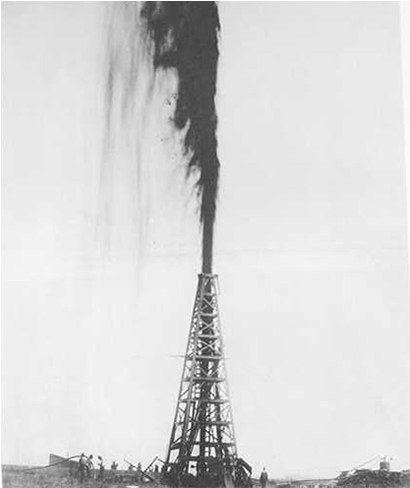This Day in Labor History: September 11, 1921

On September 11, 1921, oil workers in the San Joaquin Valley went on strike in a desperate, though ultimately failed, attempt to improve their lives. Showing how hard it was to organize during Red Scare, this very brief moment in labor history demonstrates that organizing never dies, even in the worst conditions.
The post-World War I landscape initially looked promising for unions. The AFL was brought into the government by the Wilson Administration in a way that unions had never experienced before. The AFL was all about crushing its radical rivals such as the Industrial Workers of the World and kicking radicals such as Emma Goldman out of the country. But the initial Red Scare soon was targeted at all of labor. Once the war ended, the AFL had no more role in the government and employers look to repeal all the gains workers had made during the war. By 1921, labor was in serious decline. War was effectively declared against West Virginia coal miners and soon the United Mine Workers of America would be close to extinct. The entire 1920s was a dark, dark time for American labor.
This outcome was not completely clear in 1921, but employers were making gain after gain on their workers. That was true in the oil fields of California as well. On September 11, 1921, 8,000 workers affiliated with the Oil Field, Gas Well and Refinery Workers of America (generally known as the Oil Workers International) walked out in the San Joaquin Valley. They felt they had no choice. The bosses were forcing a $1 a day decrease in pay on them, which for the lowest paid workers was up to a 25 percent wage decline. Moreover, the companies were no longer willing to accept the union as a bargaining agent. So it was either strike or die. They figured that if they didn’t hold the line here, they would lose the only other major gain they had achieved next, which was the 8-hour day.
The strike was about as well-organized as anyone could expect. They played it particularly conservative. IWW organizers were in the oil fields and the OWI did not tolerate their presence. They didn’t want to be subjected to the Red Scare tactics. Plus it was an AFL-affiliated union. They had a lot of World War I veterans in their ranks so they created security patrols made up of the veterans. They played up their patriotism, complaining to the federal government that the employers were comparing them to the Soviets when in fact they were an American union that believed in American values.
On September 14, the oil producers tried to bust the strike by bringing in scabs from San Francisco on a chartered train. But 2,000 workers met the train and stopped it. They took all the weapons from the scabs on the train and sent it back to San Francisco under a union escort. The biggest leader of the strike at the local level was Harvey Fremming who would later become international president of the OWI. At this point, Fremming was just a local oil worker. But he drove the California coast to build up solidarity from other unions and to organize other oil workers. In the oil towns, the local businesses really depended on the oil workers to survive and so the merchant class generally favored the workers. In the town of Taft, merchants even raised $4,000 for the strike fund.
This was a brave and well-organized action. There’s very little to criticize here from a strategic perspective on the union’s part. But they just weren’t going to win this strike. The OWI had taken so many losses in the last two years that there was almost no strike assistance from the international. The federal government under Harding most definitely wasn’t going to intervene. The oil bosses had enormous power. Remember that much of these fields were Rockefeller interests. You think Standard Oil was scared of the OWI? No way. They just sat it out and starved them out. By November 3, the strike was over and the union busted in most of the fields.
The OWI was basically finished in the San Joaquin Valley. It still had quite a bit of strength on the California coast and a lot of blacklisted union leaders got jobs in the fields there. Slowly, they rebuilt the union but it really took until the 1930s for it to reemerge as any kind of a force. This again replicates on a smaller schedule the trajectory of the Mineworkers, who would reemerge in the 30s to transform the labor movement. The blacklisted workers started a new local in Long Beach in 1922, which became the center of the OWI for that decade, keeping the union alive. The main victory it had in the later 20s was finally getting the state of California to care about workplace safety, working to have the state not only issue but enforce a new set of workplace safety regulations that significantly reduced deaths and injuries in this very dangerous job.
I borrowed from Fred Glass, From Mission to Microchip: A History of the California Labor Movement, to write this post.
This is the 369th post in this series. Previous posts are archived here.


